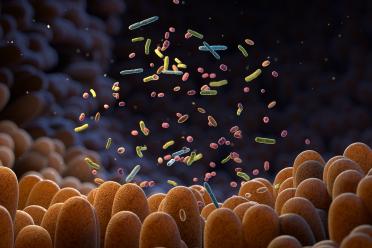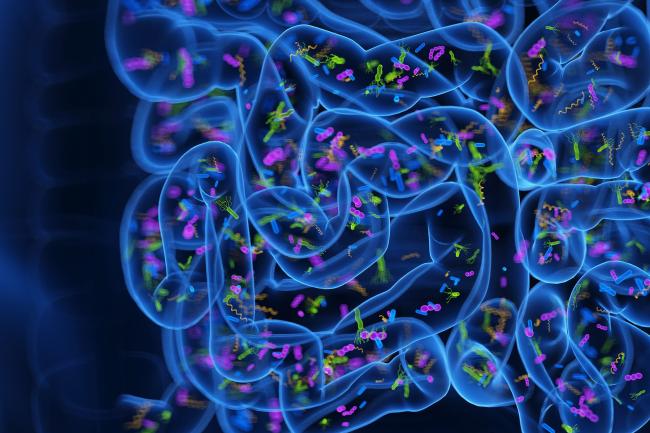
By analysing thousands of diverse microbiomes, they have identified a set of common signatures, based on the ecosystem of bacteria present in the samples. These signatures will allow researchers to identify and better understand the effects of microbiome disturbances on human health.
The human gut microbiome is a complex community made up of hundreds of distinct microbial species that have a major influence on our health and wellbeing.
These microbes colonise us at birth, forming into an established community as we age. Everyone has their own unique set of microbes, which is shaped by early life, diet, their immune system and other factors. By adulthood, our microbiome composition is fairly stable, but can deteriorate detrimentally affecting our health.
Because of this role in health in disease, there has been a lot of interest in understanding the make-up of the microbiome and how that influences health.
Researchers have linked changes in the microbiome to various conditions, but with everyone’s microbiome being different there is a need to understand what a “normal” microbiome looks like.
As with any ecosystem like a lake or rainforest, different species in a microbiome ecosystem co-exist and interact, depending on and influencing each other. Different combinations of microbes can come together to form a stable, “healthy” microbiome and so any definition needs to consider the full spectrum of microbial variability.
To address this, researchers from the Quadram Institute and Earlham Institute – both based on the Norwich Research Park - led a study that analysed over 5,000 individuals’ gut microbiomes.
Their findings have now been published in the journal Cell Host & Microbe. The study was funded by the European Research Council and the Biotechnology and Biological Sciences Research Council, part of UKRI.
To have a uniform and unbiased dataset, the team worked on faecal samples from people in 13 countries across three continents. The samples came from babies, infants and adults to incorporate the major changes in the microbiome seen as we age.
The team used metagenomes of samples to reconstruct the species and their genomes present in each human host’s gut. They then used a machine-learning algorithm to identify the types of bacteria that were commonly found working together as “guilds” in a stable microbiome ecosystem.
From this, they were able to identify a set of five gut microbiome “signatures” that relate directly to ecological interactions in the microbiome. Each individual microbiome could be characterised by one, but usually a combination, of these five signatures. The model fits with known shifts in microbiome ecosystems, such as those seen during ageing. It also detects deviations from these signatures that link to ill health or infections.
“The five enterosignatures represent typical gut microbiomes that you’ll find across the world. We invested a lot of care and time in finding a model that is generalisable to microbiomes from all parts of the world - indeed, when testing our model on microbiomes from non-western countries, we found an almost perfect fit." said Dr Falk Hildebrand, Group Leader at the Quadram Institute and the Earlham Institute.
The five signatures are each dominated by different bacterial groups; Bacteroides, Firmicutes, Prevotella, Bifidobacterium or Escherichia.
Each of these signatures represents a guild of bacteria that potentially provide different services to the ecosystem, and their human host.
“We analysed the functional roles each signature could have in the microbiome. The Bacteroides signature, for example, is enriched in enzymes associated with breaking down carbohydrates, suggesting a key role in releasing nutrients from food, whilst Bifidobacterium was associated with the healthy fermentation of complex carbohydrates“ said Dr Clémence Frioux, former postdoc in the Hildebrand group, now researcher at the Inria Centre at the University of Bordeaux, France.




